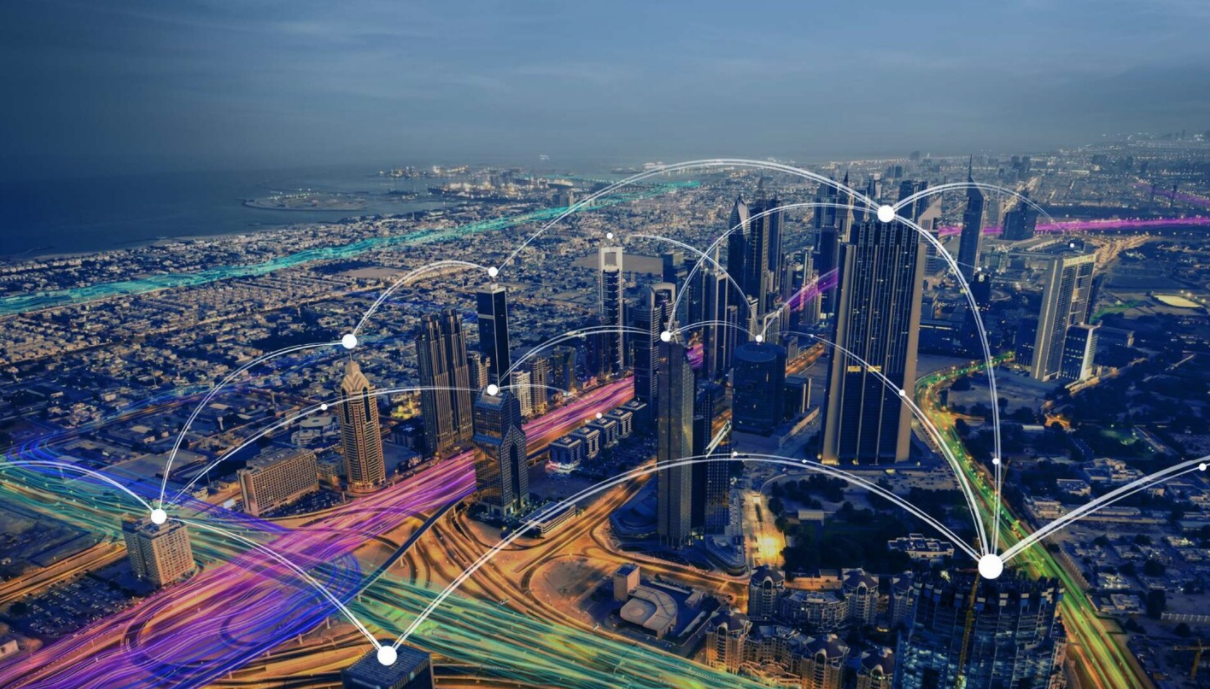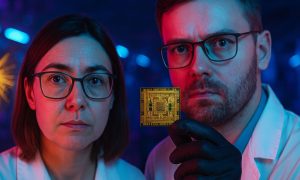

Dijam Panigrahi, co-founder and COO of GridRaster, a provider of cloud-based AR/VR platforms, explains how medical manufacturers are leveraging AI, IoT, AR/VR to achieve corporate sustainability goals.Expand
Doctor use robotic and innovative medical technology diagnose and examine patient brain with intelligence software. AI, Innovation medical healthcare and digital science technology in futuristic.
Numerous technologies that help achieve sustainability goals and emissions reduction have been sought after by industry 4.0 enterprises and medical manufacturers. These include automation, sensor technology, IoT, and wireless connectivity. As a result, entire industries and manufacturers within the medical and health communities can now generate, collect, track, and analyse the massive amounts of data that serve as the foundation for AI initiatives thanks to these technological tools. Today’s businesses and leaders are now effectively using this data and technologies to advance their digital transformation while also supporting their corporate and sustainability initiatives.
AI, IoT, machine learning are important for sustainability
As a result of this use, medical manufacturers are implementing technologies like AI and AR/VR to create enhanced product designs, optimised production planning and logistics, predictive maintenance, improved quality and process control, agile robots, energy efficiency, and minimal waste in their operations. These technologies have proven to help further an organisation’s digital transformation strategies through greater efficiency and reduction of costs.
AI can receive and process a wide range of information thanks to a combination of sophisticated sensory devices and computer vision. In comparison to the time required for human analysis, the enormous amount of data can be analysed quickly. An improved outcome is produced by enhancing the data with machine learning (ML) and natural language processing (NLP). Therefore, AI is playing a more significant role in sustainable manufacturing.
How AR/VR plays an important role
For it’s part, AR/VR is also adding even more power to the sustainable business practices mission. Let’s first explain the difference between AR/VR.
Augmented reality (AR) refers to a technology used by medical manufacturers or enterprise businesses that adds virtual elements to the real world. These virtual elements can appear in the form of text, images, 3D models or animations, for example. They are usually displayed via a smartphone or special AR glasses. AR can be used for various purposes, such as marketing, design/engineering, education, navigation or training.
Virtual reality (VR), on the other hand, refers to a technology that creates a virtual world that enterprise users can enter with the help of VR glasses. In a VR environment, the user can interact, manipulate objects and even perform physical movements. This allows users to interact with the virtual world. VR can be used for various purposes, such as design, simulations, training, or customer site visits.
Medical manufacturers that leverage AR/VR quickly realise they are helping the planet by meeting consumer demand for sustainable practices, practicing responsible consumption and production, reducing waste in early product design and redesign stages, promoting and teaching recycling practices, and supporting brand transparency. As a specific set of examples, manufacturers that utilise AR/VR training in replace of real-world training save emissions resulting from waste during the production of plastics. And virtualised customer site visits also reduces emissions from transportation of physical in-person meetings.
Sustainable practices in the creation, distribution, and sale of brands’ products are becoming more and more in demand. By purchasing particular products, consumers are voicing their opinions. Even if it costs more, they are choosing to support environmentally conscious, sustainable brands over less environmentally friendly ones.
Multiple sustainable solutions are further provided by virtualised technologies. Live AR events are one such remedy, as they eliminate the need for extraneous travel, excessive printing, and other waste associated with real-world live events.
3D & AI drive higher levels of sustainability
One of the key requirements for AR/VR applications is to precisely overlay on an object its model or the digital twin. This helps in providing work instructions for assembly and training, and to catch any errors or defects in manufacturing. The user can also track the object(s) and adjust the rendering as the work progresses, solidifying the sustainable business practice.
Most on-device object tracking systems use 2D image and/or marker-based tracking. This severely limits overlay accuracy in 3D because 2D tracking cannot estimate depth with high accuracy, and consequently the scale, and the pose. This means even though users can get what looks like a good match when looking from one angle and/or position, the overlay loses alignment as the user moves around in 6DOF. Also, the object detection, identification and its scale and orientation estimation — called object registration — is achieved, in most cases, computationally or using simple computer vision methods with standard training libraries (examples: Google MediaPipe, VisionLib).
This works well for regular and/or smaller and simpler objects such as hands, faces, cups, tables, chairs, wheels, regular geometry structures, etc. However, for large, complex objects in enterprise use cases, labeled training data (more so in 3D) is not readily available. This makes it difficult, if not impossible, to use the 2D image-based tracking to align, overlay, and persistently track the object and fuse the rendered model with it in 3D. By utilizing AR/VR in 3D and in conjunction with AI, users can realize a proper outcome and ensure that their virtualized process has led to a more sustainable business practice.
With these technologies in use, medical manufacturers and businesses can know that their investments in AI, mixed reality solutions, and IoT, among others, will help them arrive closer to their corporate sustainability goals in the years to come.





























